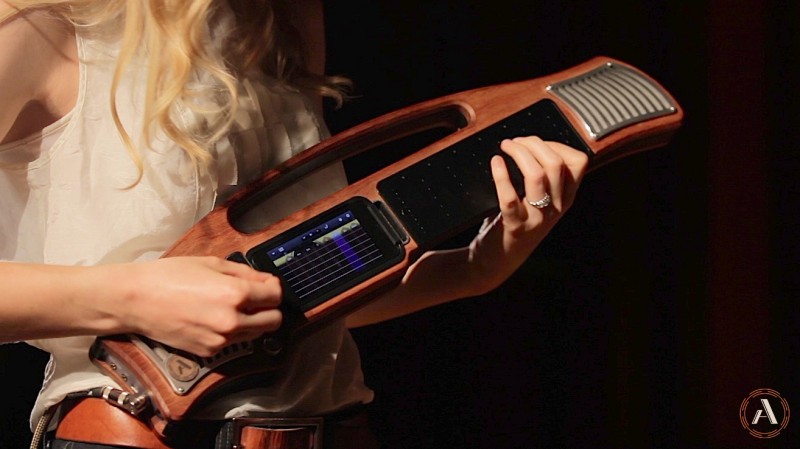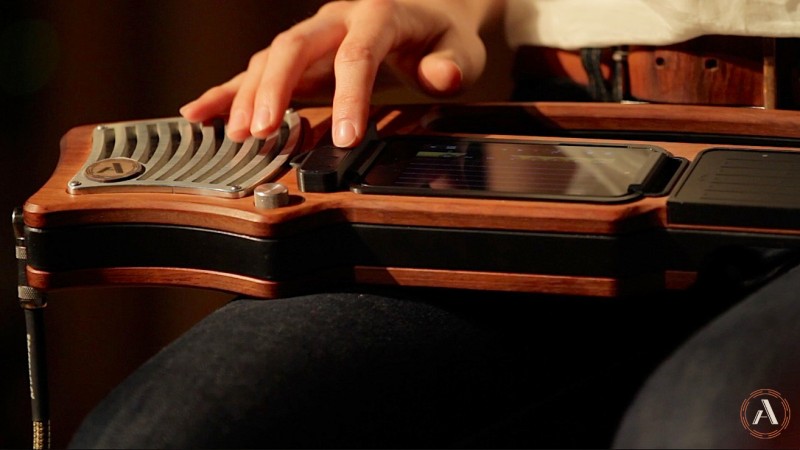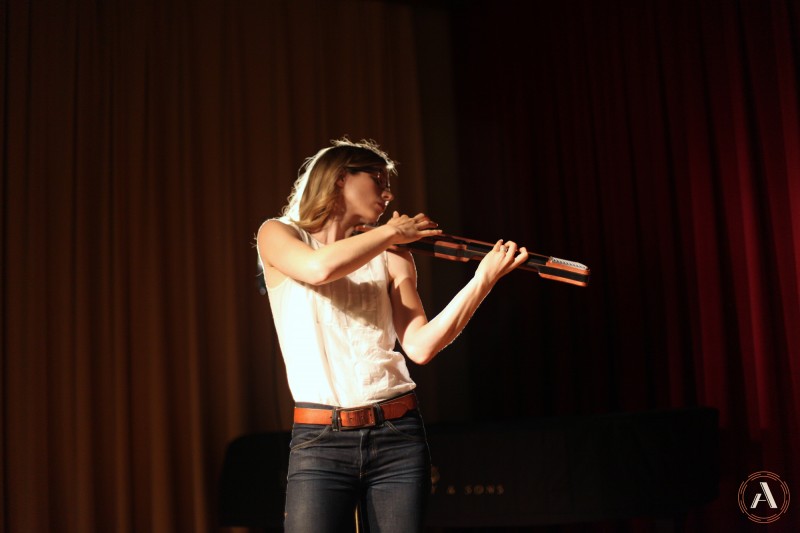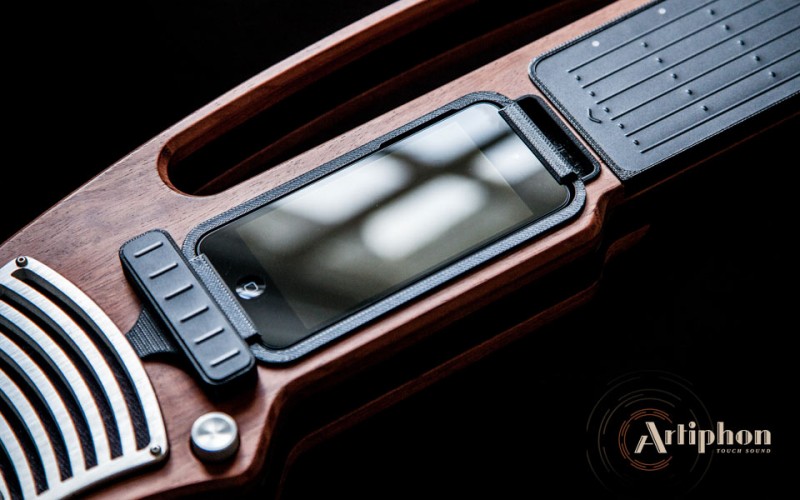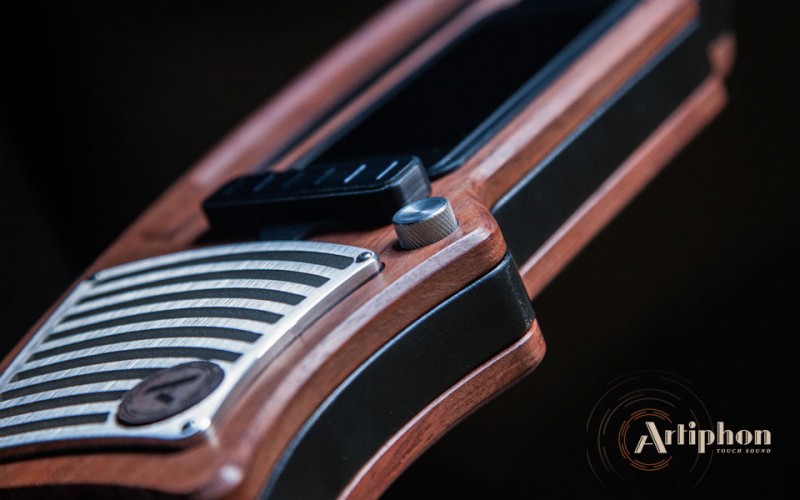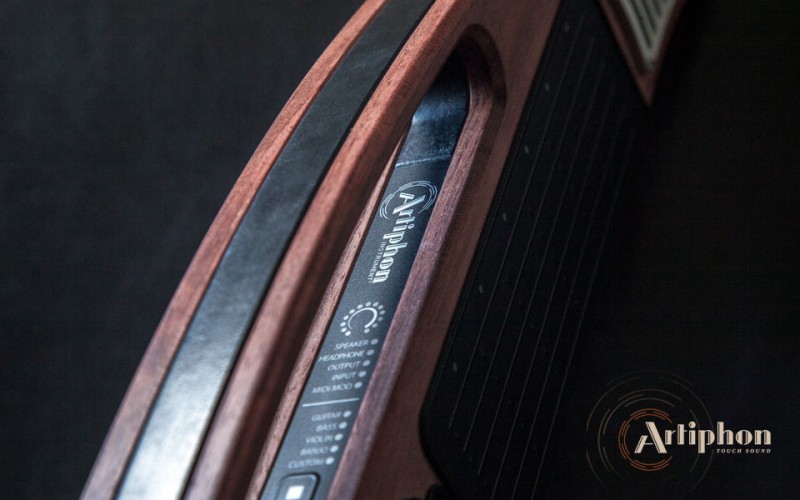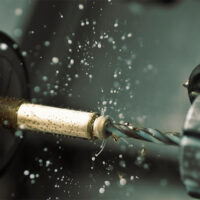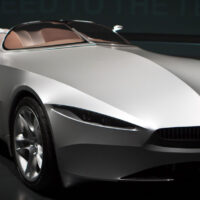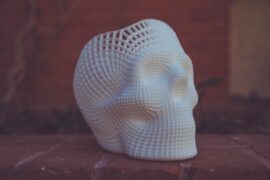The Artiphon Instrument 1 is, hands down, the Swiss Army knife of digital instruments. Using the computer in my pocket, 3D printed components, and some rad sensors, Artiphon enables musicians to play with and practice a variety of stringed instruments in one. The Instrument 1 adapts an Apple mobile device into a versatile, and highly portable, instrument body that allows musicians to do more than tap a screen – it allows the use of that hard-earned technique to produce digital music. The combination of modern manufacturing, mobile technology, and music is a powerful one, and the Instument 1 is a step towards new kinds of instruments made possible by this trio.
The Instrument 1 is a multi-instrument ‘musical controller’ that uses the iOS app platform. It offers four playing positions, each simulating different instruments: in front of you like a guitar, under your chin like a violin, upright like a cello, or flat on a table or lap for piano/drumming/dulcimer action. The player interacts with two sensor panels – one for strumming, plucking, and bowing motions, and the other as a six-string fingerboard (or drum kit). Both can detect speed and pressure, thus providing a realistic and responsive playing experience. Do you have good vibrato? – that comes through. Fast finger-picking? – that too! The technique developed from actual instrument practice can be used on the Instrument 1.
From the sensors, a signal is sent to the Apple device. The MIDI signal (Musical Instrument Digital Interface, a standard music data interface) can be carried into any existing MIDI-enabled app, like GarageBand for mixing and Animoog for synthesizing. Any new third-party app on iOS will also be compatible, so the possibility for continuous updates and improvements is there.
Artiphon is shipping their first round of units with 3D printed parts produced by Stratasys using the FDM process. They aren’t the first company to realize the benefits of making end use parts with additive manufacturing, it’s a growing trend, but they’re one of the few using 3D printing for consumer facing parts on a device for which quality is of the essence. Musicians are accustomed to only the highest quality wooden boxes! Artiphon’s willingness to use additive manufacturing, and their understanding that 3D printed doesn’t mean low quality, puts them ahead of the pack.
Artiphon is based in Nashville – not your everyday hardware startup city. That’s a good thing. They’re not just making a consumer electronic device, they’re making an instrument. Nashville is a great place for instruments. If you want to create innovative musical products, then you need to do it for musicians, not for people that like gadgets. I hope they stay in Nashville, and I hope they keep their focus on modern music tools, as there’s a big opportunity there and I want to see it happen!
I’m excited to watch the Instrument 1 succeed. As the market for digital instruments begins to show more potential and the barriers to entry decrease, we’re going to see instruments the likes of which we can barely begin to imagine. Artiphon and others will continue to push the boundaries of music with new technology while maintaining the craftsmanship and quality that instruments require. The Instrument 1 embodies that goal.

a href=”https://www.solidsmack.com/wp-content/uploads/2014/05/artiphone-instrument-1-01.jpg”>


